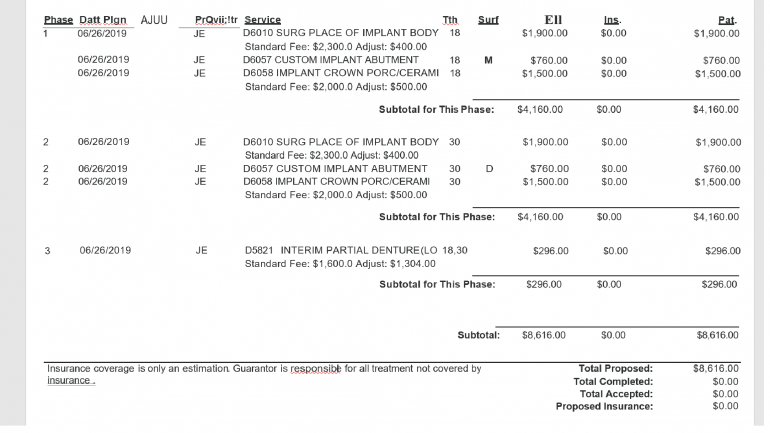
Dental Code D5953: Speech Aid Prosthesis for Adults
Dental Code D5953 represents a specialized dental procedure known as the speech aid prosthesis for adults. This treatment is designed to address speech difficulties caused by dental or facial abnormalities.
Consultation and Evaluation
The first step in the process is an initial consultation and evaluation performed by a qualified dentist. During this stage, the dentist will conduct a thorough examination of the patient's oral health, facial structure, and speech patterns. The purpose is to assess the underlying causes of the speech difficulties and determine whether a speech aid prosthesis is an appropriate treatment option. The dentist will consider factors such as the patient's medical history, previous dental interventions, and overall oral health.
Treatment Planning
Once it is determined that a speech aid prosthesis is suitable for the patient, a personalized treatment plan is created. This plan outlines the various steps involved in the procedure and provides a roadmap for the treatment process. It includes details about the expected outcomes, potential risks, and any limitations associated with the treatment. The dentist will discuss the treatment plan with the patient, addressing any concerns or questions they may have, to ensure a clear understanding of the process.
Impression and Mold Taking
To create a customized speech aid prosthesis, precise impressions and molds of the patient's mouth are taken. This step involves the use of dental putty or a digital scanner to capture the detailed shape and contours of the oral structures. The impressions serve as a blueprint for the dental laboratory technicians who will fabricate the prosthesis. This process is painless and typically takes only a few minutes to complete. During the impression and mold-taking process, the dentist will ensure that the patient's comfort is prioritized by using gentle techniques and materials.
The dental putty or digital scanner is carefully applied to capture an accurate representation of the patient's oral structures, including teeth, gums, and palate. This meticulous approach guarantees that the speech aid prosthesis will fit snugly and comfortably, promoting ease of use and natural speech production. The impressions are then sent to the dental laboratory, where skilled technicians utilize advanced technology and craftsmanship to fabricate a custom-made prosthesis tailored to the patient's unique oral anatomy.
Prosthesis Fabrication
Based on the impressions taken, skilled technicians at a dental laboratory begin the fabrication of the speech aid prosthesis. They utilize high-quality materials that are biocompatible and durable. The technicians carefully craft the prosthesis to fit the patient's mouth precisely, taking into account the unique characteristics of their dental arches, palate, and surrounding tissues. This custom-made approach ensures that the prosthesis is comfortable, aesthetically pleasing, and functions effectively.
Fitting and Adjustments
Once the speech aid prosthesis is fabricated, a fitting appointment is scheduled. During this visit, the prosthesis is placed in the patient's mouth, and the dentist makes any necessary adjustments to ensure a proper fit and optimal functionality. It is essential that the prosthesis fits securely and comfortably to avoid any issues with speech or discomfort while wearing it. The dentist will also evaluate the patient's speech patterns to ensure that the prosthesis allows for clear and natural speech production. The fitting appointment is a crucial step in the process, as it allows the dentist to assess the fit of the speech aid prosthesis within the patient's mouth. The dentist will carefully examine the prosthesis, making minor adjustments if needed to ensure a precise and comfortable fit. These adjustments may involve smoothing any rough edges, refining the contour of the prosthesis, or adjusting the positioning to optimize speech clarity. The dentist will work closely with the patient, carefully listening to their feedback and addressing any concerns to ensure that the prosthesis enables them to speak naturally and confidently.
Speech Rehabilitation and Adaptation
After receiving the speech aid prosthesis, a period of speech rehabilitation and adaptation is necessary. This process involves practicing and adapting to the prosthesis to improve speech intelligibility and overcome any initial discomfort. The patient may need to adjust their tongue and oral muscles to accommodate the prosthesis. The dentist may provide guidance and exercises to facilitate this transition period. In some cases, working with a speech-language pathologist who specializes in speech aid prostheses can be beneficial. They can provide additional support and techniques to help optimize speech clarity and confidence while using the prosthesis.
Summary of Dental Code D5953
Dental Code D5953 represents the speech aid prosthesis for adults, a specialized dental treatment that addresses speech difficulties resulting from dental or facial abnormalities. The procedure involves several important steps, including consultation and evaluation, treatment planning, impression and mold taking, prosthesis fabrication, fitting and adjustments, and speech rehabilitation. By following this comprehensive process, individuals can regain their ability to communicate clearly and confidently. If you believe you could benefit from a speech aid prosthesis, consult with a dentist to explore this treatment option further and improve your overall quality of life.
Make your dental care dollars go further with Dr. BestPrice! It's time to invest in your smile's future.
